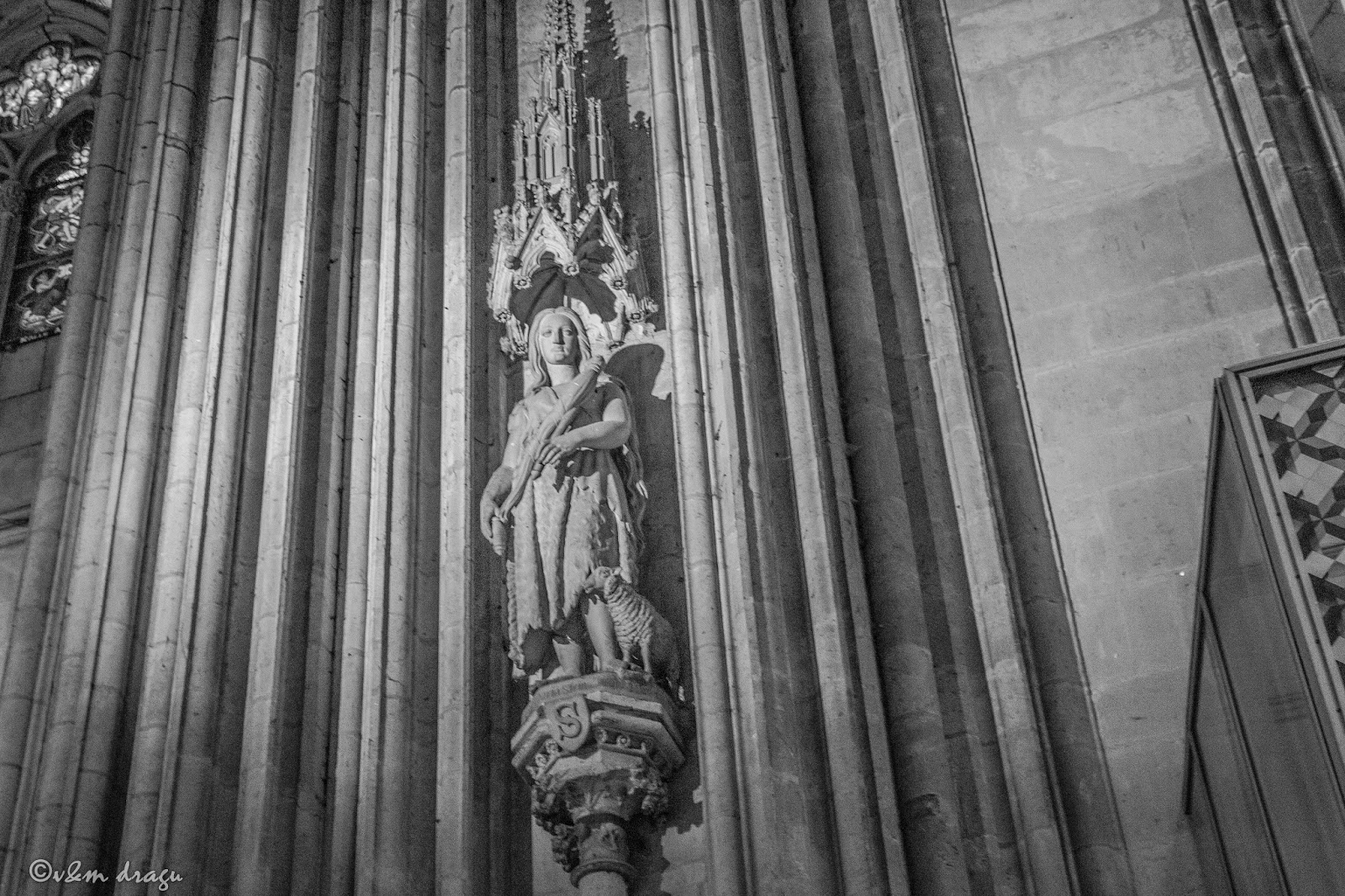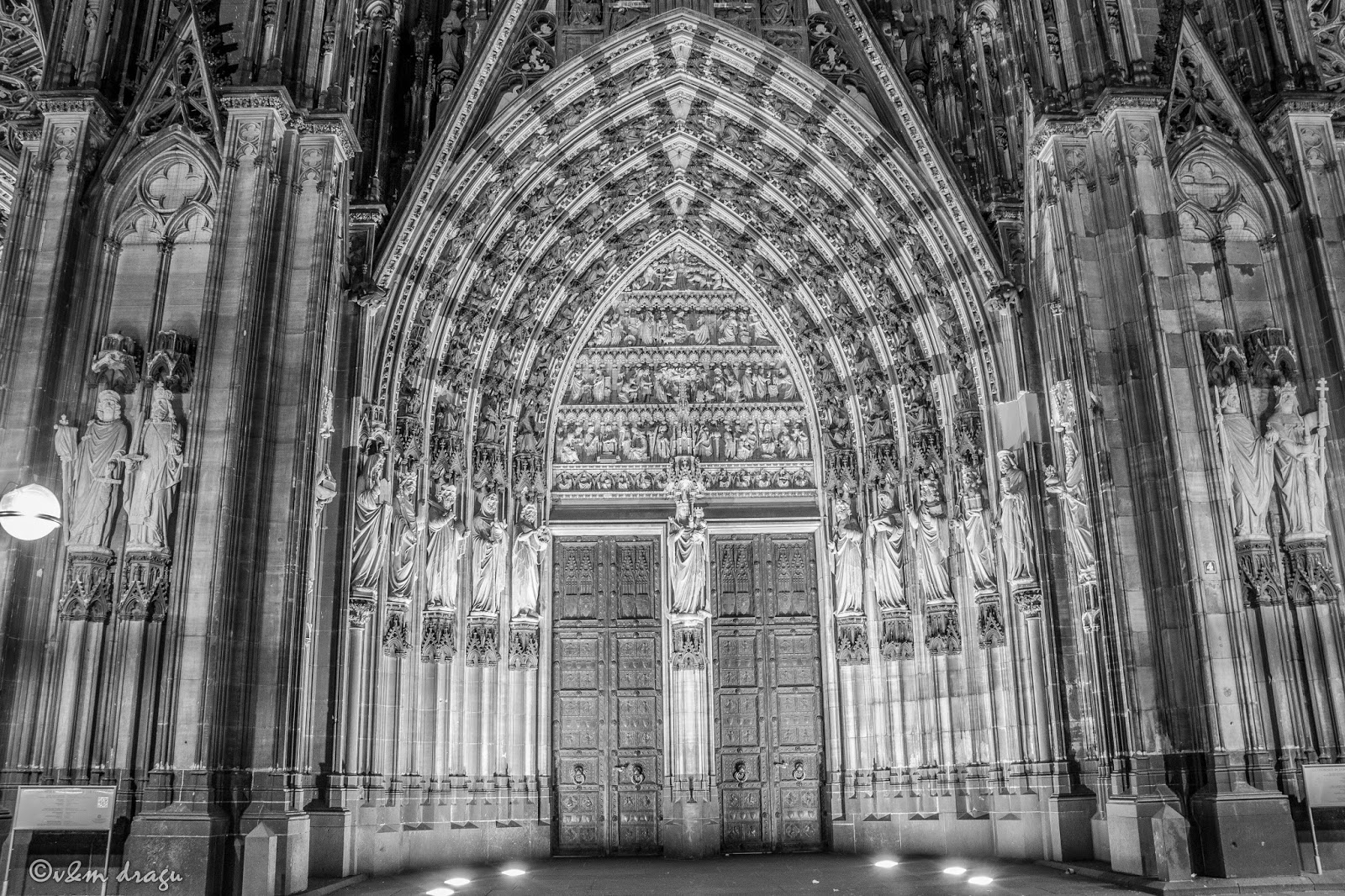Cologne Cathedral (Kölner Dom) (Latin: Ecclesia Cathedralis Sanctorum Petri et Mariae, officially Hohe Domkirche St. Petrus, English: High Cathedral of St. Peter) is a Roman Catholic cathedral in Cologne, Germany. It is the seat of the Archbishop of Cologne and the administration of the Archdiocese of Cologne. It is a renowned monument of German Catholicism and Gothic architecture and is a World Heritage Site.It is Germany's most visited landmark, attracting an average of 20,000 people a day.
Construction of Cologne Cathedral commenced in 1248 and was halted in 1473, leaving it unfinished. Work restarted in the 19th century and was completed, to the original plan, in 1880. It is 144.5 metres (474 ft) long, 86.5 m (284 ft) wide and its towers are approximately 157 m (515 ft) tall. The cathedral is the largest Gothic church in Northern Europe and has the second-tallest spires (after Ulm Minster.) Its two huge spires give it the largest façade of any church in the world. The choir has the largest height to width ratio, 3.6:1, of any medieval church.
Internally, the medieval choir is more varied and less mechanical in its details than the 19th century building. It presents a French style arrangement of very tall arcade, a delicate narrow triforium gallery lit by windows and with detailed tracery merging with that of the windows above. The clerestory windows are tall and retain some old figurative glass in the lower sections. The whole is united by the tall shafts that sweep unbroken from the floor to their capitals at the spring of the vault. The vault is of plain quadripartite arrangement.
The choir retains a great many of its original fittings, including the carved stalls, which is made the more surprising by the fact that French Revolutionary troops had desecrated the building. A large stone statue of St Christopher looks down towards the place where the earlier entrance to the cathedral was, before its completion in the late 19th century.
The nave has many 19th century stained glass windows. A set of five on the south side is called the Bayernfenster, and were a gift from Ludwig I of Bavaria, and strongly represent the painterly German style of that date.
Externally, particularly from a distance, the building is dominated by its huge spires, which are entirely Germanic in character, being openwork like those of Ulm, Vienna and Regensburg Cathedrals.
Source text: http://en.wikipedia.org/wiki/Cologne_Cathedral
































































































































































No comments:
Post a Comment